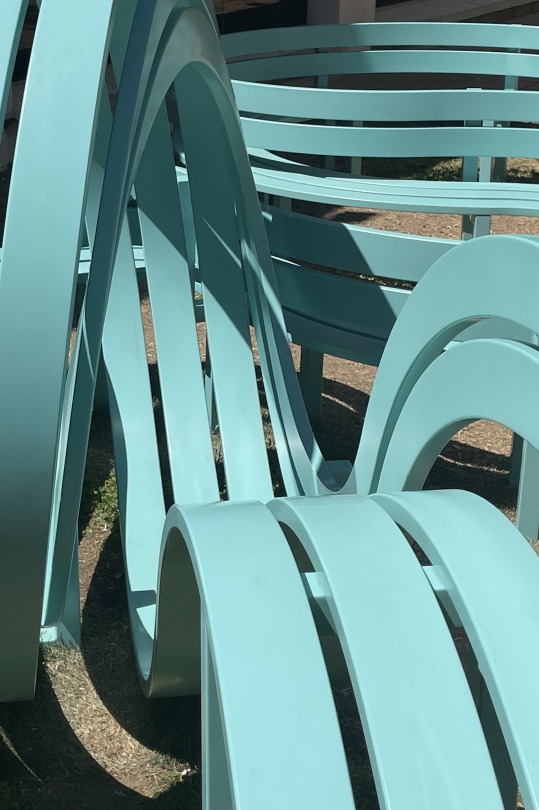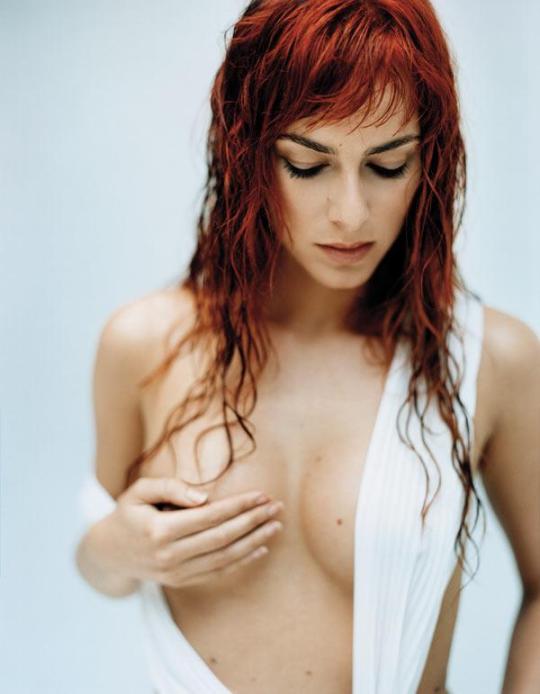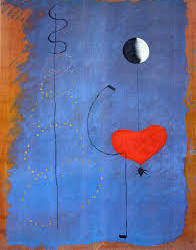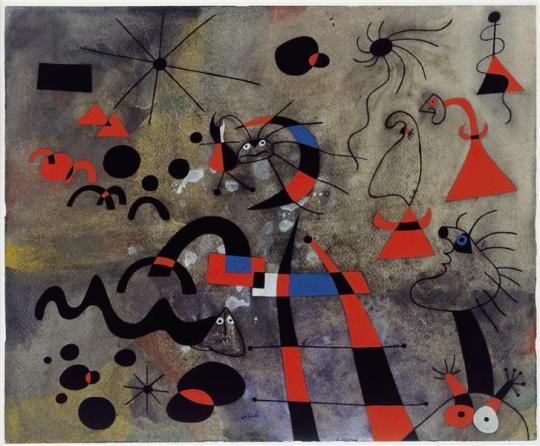#mirò
Explore tagged Tumblr posts
Text

#joan mirò#mirò#fondation mirò#spain#catalonia#barcelona#green#blue#geometry#art#sculpture#sun#light#summer
11 notes
·
View notes
Text
Sempre da sempre

Perchè io non so dire
quel che i suoi occhi mi fanno provare.
Non mani,
non voce,
non braccia e nè labbra.
Occhi.
I suoi.
Addosso.
Occhi che a differenza degli altri,
non mi vedono,
ma mi guardano come nessuno mai.
Occhi che mi tengono,
stringono,
toccano,
baciano,
per poi ricominciare.
Occhi che in mezzo alla folla sapevano dire: “Lei è mia. Sempre e da sempre!”
Gabriele D’Annunzio
17 notes
·
View notes
Photo





Je reviens à mon projet de présenter la plupart de mes 55000 photos (nouveau compte approximatif. On se rapproche du présent !). 2015....
Marseille, en été. A la Vieille Charité, une expo eut lieu : “Futurs”
- Joan Mirò - "L'Or de l'Azur”
- Oscar Domìnguez - “Paysage Cosmique”
- Alexander Calder - "6-5-1-4'' + ''Mobile”
- Joan Mirò - "Danse de Personnages et d'Oiseaux sur un Ciel bleu”
- Alain Jacquet - "Jumping Rope”
#marseille#souvenirs#expo#futurs#vieille charité#art moderne#art contemporain#joan miro#miro#mirò#oscar dominguez#alexander calder#calder#mobile#alain jacquet
4 notes
·
View notes
Text
Joan Mirò
Postcard from USA Mirò, l’Uccello Luce 1981 – La Biennale di Venezia 2023

View On WordPress
0 notes
Text


Kira Mirò
36 notes
·
View notes
Text

86 notes
·
View notes
Text

Il nostro cuore non è fatto di pietra. La pietra a un certo punto può andare in frantumi, sbriciolarsi, perdere ogni forma. Ma il cuore non può andare in frantumi. E questa cosa senza forma che ci portiamo dentro, buona o cattiva che sia, possiamo trasmetterla gli uni agli altri senza limiti.
(Haruli Murakami - Joan Miró)
14 notes
·
View notes
Text

Kurt Schwitters, Picture of Spatial Growth - Picture with two small dogs, 1920-39 (Oil paint, wood, paper, cardboard and china on board)
This is a type of mixed-media work known as 'Merz', a term Schwitters coined in 1919 to describe 'the combination for artistic purposes of all conceivable materials'. According to this principle, found objects contain the same aesthetic potential as tubes of paint. Schwitters started this assemblage of discarded rubbish and printed papers in Germany in 1920. Seventeen years later he brought it with him to Norway, having escaped from Nazi Germany. There he added Norwegian material: theatre tickets, recipts, newspaper cuttings, scraps of lace, and a box with two china dogs. The different layers of collage reflect the artist's journey into exile.
Focus on collage: combining everyday objects and materials became a new technique for twentieth-century artists.
More than a century ago, artists began to use cut-up newspapers and pieces of wallpaper in their compositions. This technique brought recognisable pieces of everyday life into artworks.
Artists such Man Ray and Joan Mirò expanded this technique into three dimensions. They were attracted by the potential of combining discarded objects to create new forms. Their work draws on the surrealist idea that unexpected combinations can have an unsettling power. This often relates to violence or sexuality but is sometimes humorous too.
Subsequent generations of artists have brought images and objects together in new ways. Some continue to use this approach to create moments of poetic surprise. For others, collage is a way to analyse the images in advertising and mass media that surround us.
#art#collage#kurt schwitters#mood#waste#creativity#tate modern#everydaymaterials#everyday#objects#technique#newspap#artwork#man ray#joan mirò#surrealist#surrealism#studioriver#sustainability
3 notes
·
View notes
Text









today
#little wonderful art exhibition#with art from the philadelphia museum of art#and my best guy mirò :-)
9 notes
·
View notes
Text

“Memoria polaroid” – un blog alla radio S24E12
“What a feeling to have found you here”, cantano i giovani Glazyhaze nel loro nuovo singolo qui in scaletta. In effetti, ogni volta è una emozionante sorpresa scoprire che c’è qualcuno ancora qui, ad ascoltare questi sessanta minuti e questa bella selezione di novità indiepop e indie rock, senza dimenticare gli indispensabili brindisi, nella nuova puntata del podcast di “Memoria polaroid – un…
#Boyracer#Children&039;s Crusade#Cindy#Club 8#Dancer#Giardini di Mirò#Glazyhaze#Heron King#hooton tennis club#Horsegirl#Tulpa
2 notes
·
View notes
Text

#barcelone#barcelona#bcn#catalunya#spain#espana#travel#europe#black and white#35mm#summer#verano#vacation#holiday#joan mirò#mirò#architecture#analog#analogcamera#analogfilm#argentique#35mmphotography#35mmfilm#filmisalive#believeinfilm#filmfeed#expofilm#theanalogclub#filmisnotdead#analoguevibes
2 notes
·
View notes
Text

SENSI DELL'ARTE - di Gianpiero Menniti
LA LIBERTÀ DI MIRÓ
Non mi capita spesso. Tuttavia, quando incontro Miró sulla strada dei pensieri, è come respirare la brezza impetuosa e amichevole di un picco sul mare. Nessun artista prima di lui, se non per cenni, ha saputo infondere una ventata di assolutezza, intesa come scioglimento di ogni vincolo. Forse il "Dada", ma non fino al confine estremo: l'oggetto possiede ancora la forma, la determinatezza. Con Joan Miró, l'immagine si dissolve per costituirsi in un flusso di segni che possiedono l'animata, essenziale bellezza delle tracce di colore. Nulla appare necessario. Tutto può accadere. La mano dell'artista rifiuta il progetto e si lascia guidare dalla forza invisibile e sconosciuta della creatività. Una giocosa e tragica percezione della materia impossibile: lo stato d'animo. Non si tratta di sentimenti soggettivi ma d'un incrociarsi di sensazioni che occupano molte origini, volutamente abbandonate alla purezza del loro espandersi. Via da ogni gabbia d'accademismo e di definizione. Meditare non è comprendere: è cogliere l'improvviso e minuto sollevarsi di un fiore dalla terra. Dipingere è abitare le radici di quel fiore senza sapere quale effetto comparirà in superficie. Eppure, sentire l'ebbrezza del suo schiudersi alla luce. E raccontarla, come un evento che accade e non come forma compiuta.
- Joan Miró (1893 - 1983): "The Escape Ladder", 1940, Museum of Modern Art (MoMA), New York
25 notes
·
View notes
Text

ceci est la couleur de mes rêves
8 notes
·
View notes
Text

Joan Mirò https://www.pinterest.es/pin/11610911534326016/
83 notes
·
View notes
Text

Primi settembre anno 2004: mi stavo preparando per spostarmi a Bologna dopo il liceo. MarcoB, uno dei punti di riferimento per la teoria e la divulgazione della musica “alternative rock” (perché all’epoca ancora si chiamava così) e sperimentale del mio paese mi prestò un blocco di 20-25 CD definiti da lui fondamentali. In qualche modo li ho sempre visti come “gli album con i quali devi approcciarti ai tuoi venti anni”, oppure “gli album senza i quali non puoi andare all’Università”. C’erano i Mogwai, i Dirty Three, Nick Cave & the Bad Seeds, i Sigur Ròs, gli Yuppie Flu (vincitori di un’edizione dell’Arezzo Wave di quegli anni) e i Giardini di Mirò: The Rise and Fall of Academic Driftings. Non ricordo bene quali fossero le singole sensazioni di ogni album; ricordo che come una spugna stavo assorbendo tutte queste sonorità per me nuovissime (venivo dal metal estremo) ma che avevo capito che fosse l’ora di scoprire. Il mio orecchio acerbo ci sentiva qualcosa degli Anathema ma perché gli stessi Cavanagh si sono ispirati a loro volta a delle matrici in comune come gli Slowdive ma in questo mondo indie-pendente del post-rock ci sono delle cose che non avevo mai sentito: gli arpeggi uno sull’altro che piano piano crescono, gli strati sonori tipici del post-rock ma senza la componente noise dei grandi nomi come i My Bloody Valentine. Eppure la produzione, per quanto indipendente non è affatto grezza come la maggior parte dei prodotti DIY. Le chitarre dei Giardini di Mirò sono incredibili; ancora oggi, a 20 di distanza dal primo ascolto, "A New Start" apre una breccia nel mio cuore con quel sassofono (non avrei mai pensato che il sax potesse comparire in un album così, io che lo avevo forse sentito solo in Joe Cocker, nel jazz e in altri generi che all’epoca aborrivo). La breccia si apre sempre di più con "Pet Life Saver" dove le voci sono dolci ma sgraziate e intime, come se venissero cantate in cameretta. I violini non fanno altro che costruire una malinconica ballata che sarebbe diventata la mia colonna sonora di alcune notti amorose con qualche ex fidanzata cariche di malinconia perché, all’epoca, era bello addormentarsi con una dose di dolce tristezza. E, da questo punto di vista, questo album dei Giardini di Mirò era perfetto. La deriva degli accademismi: quando per la prima volta si parlava in pubblico di musica “colta”, fra quelli che citavano Battiato, De André, Guccini (capirai, dai tavoli dei bar o dell’università di Bologna !!!), considerati maestri intoccabili, io amavo citare quei famosi 25 CD che gelosamente mi ero masterizzato e che pero, piano piano, mi sono comprato da Nannucci in quel primo anno di facoltà. Il bello era parlarne come se li ascoltassi da anni, da sempre; mettendo da parte i Darkthrone e gli Emperor finché non incontrai qualche ascoltatore, come una rara perla di un’ostrica, che fece il mio stesso percorso e trovò in me, seduto al suo stesso tavolo, quello che anche lui era.

La linearità, la semplicità di questo album è la sua forza, è la sintesi di quello che fecero i Godspeed You! Black Emperor (band con cui i Giardini hanno suonato insieme): usare gli strumenti rock per fare qualcosa di anti-rock; dire a tutti che il rock ormai era superato. "Trompsø is Okay" può ricordare le chitarre principali di System of a Down ma senza tutte le colonne portanti di quella musica mainstream di stampo americano e che viaggiava su Mtv. Anche se i nostri reggiani su Mtv ci suonarono: a Supersonic, condotto da Silvestrin. E poi erano gli anni di brand:new, erano gli anni che di giorno c’erano le Destiny’s Child, Marilyn Manson e Eminem ma se aspettavi la mezzanotte, la tv ti regalava ancora delle memorabili scoperte. I Giardini di Mirò sono fra queste scoperte e consiglio di leggervi questo articolo. The Rise and Fall of Academic Drifting è un disco che emoziona, è un album dove violini, sassofoni e violoncelli sono gli strumenti principali, le voci che decidono l’andamento del brano. Lunghi brani, semplici, scarni ma efficaci, dove le note toccano le armonie giuste, come l’oboe in "Pearl Harbor", come "Little Victories" (cantata da Paul Anderson dei Pram), dolce ninnananna notturna, un’ipotetica versione maschile dei Mazzy Star dove synth e violini ti strappano il cuore dandoti il bacino della buonanotte. E, se alla lunga, il format può stancare, è invece incredibile vedere come in questa opera prima ci saranno sì e no pochi minuti riempitivi perché poi basta davvero cambiare modo di suonare la chitarra, basta metterci un barrè mobile e tutto prende un altro suono anche se i pedali e gli effetti sono sempre quelli (omonimo brano di chiusura). Prendete uno degli ultimi album, un pezzo a caso di Different Times, e ascoltate come è cresciuta la band pur non spostandosi molto dalle stesse sonorità. C’è consapevolezza, crescita, decine di anni di concerti e di messe in musica (stupendo Il Fuoco e il mediometraggio degli anni ’10). Ma ascoltate come questa giovane band nel 2001 ha creato un capolavoro di musica italiana rimanendo all’esterno di qualsiasi riferimento alla musica italiana creando uno dei più begli album di formazione per qualsiasi cultore di musica. Riascoltando oggi The Rise And Fall (e leggendo questo articolo di Rolling Stone) , oggi, dopo vent’anni di vita a Bologna, mi rendo conto di come alcune cose, luoghi, posti, persone siano svaniti; di come alcuni cose, luoghi, persone erano già svanite nel momento del mio trasloco; ma unendo i ricordi personali di quegli stessi luoghi, cose e persone con questa colonna sonora, mi chiedo chi sia finito alla deriva, se loro o io (o noi), e quando queste note riaccendono questi ricordi, bisogna solo fermarsi un attimo a contemplarli per mantenerli vivi; è difficile descriverlo ma se questi ricordi causano una dolce e piacevole frattura al cuore, esattamente come l’incipit di questo album, allora tutto torna.

#Giardini di Mirò#Homesleep#Bologna#Italy#2001#post-rock#GY!BE#Yuppie Flu#mogwai#Slowdive#Anathema#rock#alternative#Mtv
0 notes
